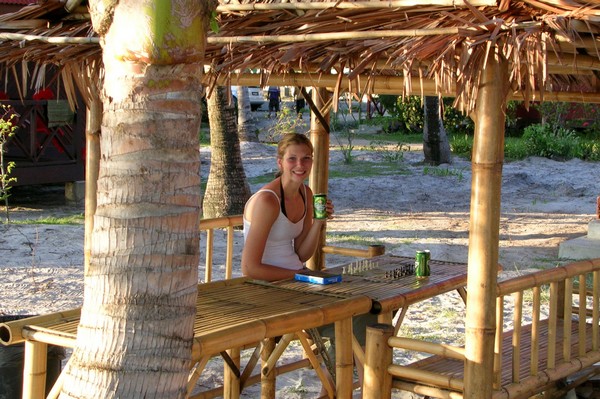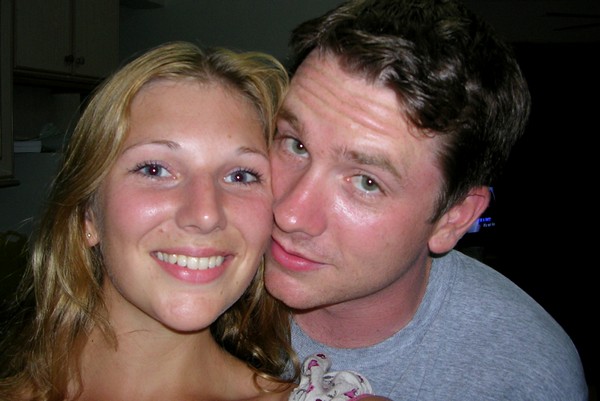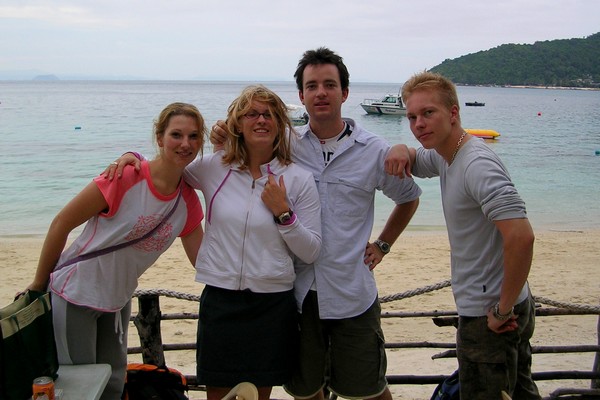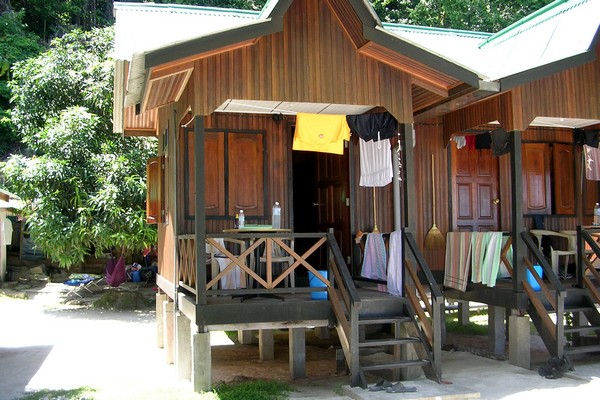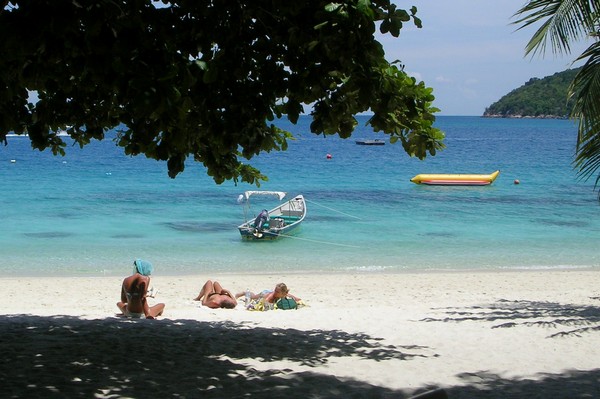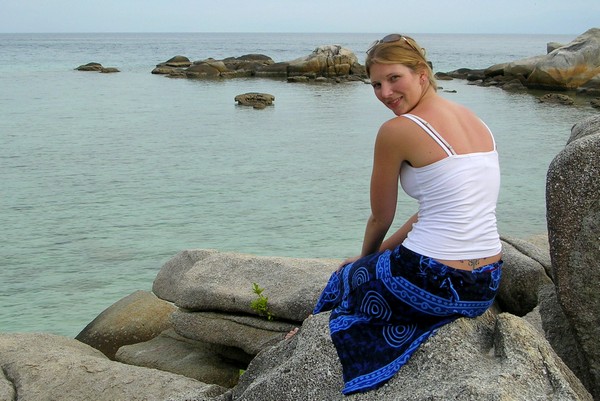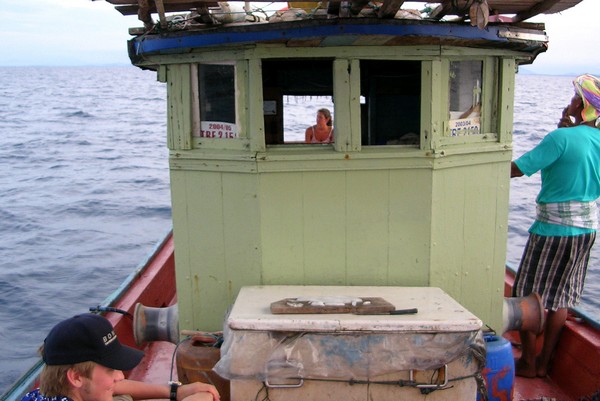Around 4 p.m. on December 13, 2011, Justin Repshas's girlfriend dropped him off at his studio apartment in downtown Charleston, South Carolina. The couple arranged to meet for dinner later and then study for finals at the college library. Meantime, Repshas, 22, told her, he'd take a nap or go running.
That April, Repshas had completed Charleston's premier 10K road race, the Cooper River Bridge Run, in a time of 44:20. Most often these days, however, he ran just to cope with the stress of college life. "I had this little 3-mile route I'd take," Repshas recalls. "It went down a heavily traveled road and then cut over to a quieter street."
Shortly after his girlfriend left, he laced up. "I vaguely remember heading out my door," he says. "My next memory was waking up in a hospital bed."
Most of us have been schooled ad naseum about cardiovascular plumbing catastrophes. Chief among these is the classic heart attack, or myocardial infarction, which typically happens when a piece of cholesterol-laden plaque ruptures and causes a clot to form in a coronary artery, quickly starving the heart muscle of oxygen-rich blood.
Less well known but equally lethal is sudden cardiac arrest, or SCA. This is a catastrophic malfunction of your heart's electrical system, a finely tuned series of electrochemical signals that keeps your heart chambers squeezing and relaxing in coordinated rhythm. When something bollixes up these signals, your pump isn't able to circulate blood effectively. Within seconds, your brain is deprived of oxygen and you collapse.
The American Heart Association reports that every year, an estimated 420,000 Americans suffer SCA outside of a hospital setting. A staggering nine out of 10 of these victims will die as a result--and 60 percent are men.
"But it's a little more complicated than just saying it's more common in men," says Gordon F. Tomaselli, M.D., chief of the cardiology division at Johns Hopkins University School of Medicine in Baltimore. "The gender gap in SCA is wider at younger ages." This means guys from their teens to their 40s are even more likely than their female counterparts to perish young.
The reasons for this deadly discrepancy aren't entirely understood. Scientists who study SCA do know that it typically has two components: There's a "substrate," the underlying health problem or environmental factor that can predispose the heart to lethal arrhythmias, and a "trigger," the actual event that eventually trips a vulnerable heart over the edge. Metaphorically speaking, the substrate loads the gun and the trigger fires it.
"The substrate conditions that people get at a young age are rare but occur with roughly equal frequency in men and women," explains Joseph E. Marine, M.D., the associate director of electrophysiology at Johns Hopkins Hospital.
There are some theories that hormones may help protect young women. It's also possible that the SCA comes from the trigger side--specifically from gender differences in athletic culture.
You heard that right: The way men train and compete in sports may leave them at greater risk for sudden death than women who have the same hidden disorders. "If women played football, basketball, and soccer at the same frequency and intensity as men," says Dr. Marine, "we might see similar levels of SCA in young women too."
For most healthy men and women, of course, the cardiovascular benefits of regular strenuous exercise are clear. And shunning your sweat regimen wouldn't be a guarantee of survival anyway.
"A sedentary lifestyle isn't necessarily protective against arrhythmias," says Dr. Marine, who adds that he once treated a nonathletic guy in his early 20s who'd suffered SCA while at rest. Men who have a susceptible substrate are in danger of succumbing to cardiac arrest during such benign activities as public speaking, making love, relaxing in the ocean, or even sleeping.
Meg Skeele need to unwind. A nursing student at the Medical University of South Carolina (MUSC), she had just finished her last exam and was driving to a local dive bar with a friend. "But I was talking so much I made a wrong turn," recalls Skeele. To get back on course, she took a curving side road and suddenly saw a cluster of onlookers around the body of a young man.
"They'd called 911," she says. "But otherwise everyone was just standing around not doing anything."
She felt a surge of adrenaline and pushed through the crowd. She checked the young man's wrist, chest, and neck for a pulse. Instead of the bounding thump thump of a healthy heart, all she could detect was a "thready" rhythm as feeble and fluttery as it was irregular.
"His skin was turning bluish gray," she says, "and a bystander said he'd stopped breathing just as I arrived."
Skeele knelt down, interlaced her fingers, straightened her elbows, and began pushing hard and fast on the man's sternum. By an incredible and fortunate fluke, he had collapsed in the perfect position for CPR--his torso lay on the sidewalk and his head was slightly lower and tilted back on the grassy berm. "His airway was completely unobstructed and perfectly straight," she says. "I started doing chest compressions."
Skeele knew that for compressions to be effective, they require a surprising amount of force--much more force, in fact, than many people realize. She depressed the man's rib cage at least 2 inches, enough to risk causing fractures. While she'd practiced CPR on a simulator that same semester, this was her first time performing the lifesaving procedure on a person.
To keep the right rhythm, she sang the Bee Gees' "Stayin' Alive" to herself, timing compressions to the beat. This hit, paramedics will confide, is the most famous song for CPR. But it's hardly the only one. "Another One Bites the Dust" works just as well.
When coronary artery disease leads to a heart attack, the scarring can promote electrical abnormalities, setting the stage for SCA. But many other conditions can also lay the groundwork for early doom. These substrates, which are particularly likely in SCA victims under 35, fall into three categories: structural, electrical, and acquired.


Maladies of malformation
Structural abnormalities in heart architecture account for most SCAs in active young men. They range from aberrations in chamber walls and interior cavities to defects in heart valves and arteries. Though these may seem like straightforward plumbing problems, the majority kill their victims by impairing the heart's electrical system.
Of all the structural causes for SCA in young men, the most common is cardiomyopathy, a general term for diseases of the heart muscle. "Dilated cardiomyopathy, for instance, leads to an increase in the size of the heart," says Samir Saba, M.D., director of the cardiac electrophysiology laboratory at University of Pittsburgh Medical Center. Like a balloon being inflated, heart muscle stretches, thins, and weakens even as its inner volume expands.
In another form, called hypertrophic cardiomyopathy (HCM), the heart's walls thicken pathologically over time. This genetic disorder occurs in one out of 500 young people and is the single leading cause of sudden heart-related death in U.S. athletes under 40. "Besides thickening, the architecture of the heart muscle tissue also becomes disorganized and prone to scarring," explains Barry J. Maron, M.D., director of the hypertrophic cardiomyopathy center at the Minneapolis Heart Institute Foundation.
How exactly thinning, thickening, scarring, and other pathological changes to the heart muscle promote electrical instability is the subject of much cutting-edge research, says Dr. Marine. Electrical waves follow predictable pathways through the heart, and it's possible that changing the distance that the waves must travel increases the odds of arrhythmia. Similarly, scar tissue within cardiac muscle, whether formed by large-scale or microscopic fibrosis, may create pathways for arrhythmia circuits to develop.
Researchers have identified over 1,000 genetic mutations that cause HCM, and many people who have these mutations are unaware that they carry a potentially life-threatening defect. "The funny thing about such genes," says Todd Miller, M.D., a cardiologist and professor of medicine at the Mayo Clinic in Rochester, Minnesota, "is that throughout childhood and your teen years, HCM might not show any manifestations. Have an echocardiogram at age 10 and everything looks fine. But usually by young adulthood, the gene gets turned on."
HCM isn't the only cardiomyopathy caused by mutations. Chris Boland was a promising high school swimmer when a nurse discovered at a blood drive that his heartbeat was somewhat irregular. His family doctor dismissed it, but later that year, Boland's heart began beating erratically during class, leaving him light-headed and so unnerved that he asked his mother to take him to the ER. One year and nearly 100 EKGs and a heart tissue biopsy later, he finally received the official diagnosis: ARVD, or "arrythmogenic right ventricular dysplasia." This rare disorder causes heart muscle fibers to be replaced by fibrous tissue and fat. His swimming--and indeed any high-intensity exercise--had to stop immediately.
"It really sucked, considering how much I'd invested in my swimming career," says Boland, now 22. "But I don't beat myself up anymore. I've accepted that it's just another thing about me."
As this case suggests, diagnosing and treating such conditions, especially when guys appear healthy, is rarely simple. But Boland should consider himself lucky because at least he had symptoms. In many young men who suffer SCA, the first hint of trouble is cardiac arrest itself.
Micheal Bernard, M.D., was commuting home from his job as a fellow in electrocardiology at MUSC. With rush-hour traffic jamming his usual route, he cut down a side street only to come upon a throng of onlookers. In their midst, he saw a woman performing CPR on a man who was lying on the sidewalk. He immediately jumped out to help.
"It's really exhausting for one person to do CPR for an extended time," says Dr. Bernard, 38. He offered to take a turn, but Skeele was so adrenalized and in the zone that she chose to keep going. Dr. Bernard gave her encouragement and began monitoring the man's vital signs. He also dispatched one of the bystanders to check nearby businesses for an automated external defibrillator. None was found.
As Skeele continued chest compressions, the theretofore motionless victim did something that, she says, "scared the living daylights out of me." He took an "agonal" breath.
Agonal breathing, which can occur minutes after the heart stops and is often accompanied by muscle jerks and odd noises, is a literal last-gasp reflex to stay alive. "I didn't expect it at all," says Skeele. "I even stopped CPR for a moment, but Dr. Bernard said, 'No! Keep going, keep going!'"
Time perception is notoriously unreliable in high-stress situations, and neither Skeele nor Dr. Bernard can say for certain how long it took emergency crews to reach the scene. Once help from the Charleston fire department did arrive, the responders quickly used their defibrillator. "It took two or three shocks before we got him out of ventricular fibrillation and into a stable rhythm," Dr. Bernard recalls.
Minutes later an ambulance pulled up, and paramedics took over. One inserted an IV line to administer norepinephrine; another placed an oxygen tube down the man's windpipe. They also strapped a high-tech device around his chest to automate chest compressions. At one point, Dr. Bernard realized that the man had slipped back into V-fib, which meant more shocks to his heart. All told, Dr. Bernard says, the man's heart was defibrillated five to seven times before it finally resumed a regular rhythm.
The victim had no ID on him. All Skeele and Dr. Bernard knew was what the paramedics told them: that the man would be taken straight to Roper Hospital. And with that the ambulance was gone.
If you've ever dissected a frog in biology class, you probably recall how electrical zaps caused the frog's leg to twitch. Cardiac contractions are also initiated by electrical impulses, although these impulses are much subtler than the kind that flows from a wall socket. Cardiac electricity comes from electrolyte ions flowing in, out, and within heart-muscle cells. "In simple terms," explains Dr. Miller, "you have waves of electrical activity that spread through your heart telling the muscle to beat. We call this 'depolarization.' Then the system has to reset itself and the ions go back to where they were before. We call this 'stage repolarization.'"

Bad wiring and electrical chaos
Your heart's dependence on these coordinated impulses leaves it vulnerable to the second major substrate category: so-called primary problems of the electrical system. Many different charged ions have a role here, but the three dominant players are sodium, potassium, and calcium. The gates that allow them to move back and forth are called channels. "When sodium channels open, for example," explains Dr. Saba, "there's a very rapid and abrupt influx of sodium ions from the outside to the inside of the cell, triggering a contraction." Potassium channels help the heart relax. And calcium channels play dual roles: They allow the contractions of the cells, and they contribute to their electrical activity.
Further complicating this are the multiple subtypes of each ion channel. Together, they adjust your heart to exactly the right tempo and force necessary to meet the circulatory demands of the moment, whether you're sitting in quiet meditation or climbing a mountain. Given such intricacy and precision timing, it's easy to see how minor glitches can sometimes compound into catastrophic failure. Such glitches are collectively called "channelopathies," with the most common being the variety of long QT syndromes (LQTS).
The "QT" here refers to a specific interval in your heartbeat's architecture. If you've ever seen an EKG printout, you know it looks like a repetitive series of spikes, hills, and flatlands. Each of those features represents a distinct electrical wave, which cardiologists have dubbed P, Q, R, S, and T. In people with long QT, the interval between the Q and T waves is just that: too long.
Though this doesn't always cause problems, it does significantly raise the odds of trouble. In a 2011 Circulation review, researchers reported that 30 to 50 percent of otherwise heart-healthy people with LQTS will suffer symptoms, mainly fainting, at some point in their lives. And for an unlucky 3 to 5 percent, the condition will cause SCA.
LQTS can be genetic, which is why when a family member tests positive for a known mutation, cardiologists will often recommend that as many blood relatives as possible be tested too, a process that's known as "cascade screening."
In those who do learn that they carry a mutation, Dr. Tomaselli thus becomes the bearer of mixed news: Most channelopathies can be successfully managed--but it means taking a beta blocker for life, and an end to intense physical exercise. "Some people are absolutely devastated by this," Dr. Tomaselli concedes. "I've had to tell rock climbers, skydivers, pilots, and open-water swimmers to quit a favorite activity because even a momentary loss of consciousness could be fatal."
A realist, Dr. Tomaselli knows that not every patient will take his advice. "Hopefully, nothing will happen to them," he says. "The problem is that we still can't predict on a person-to-person basis when one of these mutations will cause sudden death and when it won't."
Acquiring the afterlife
LQTS is not always inherited. Many times it's caused by certain prescription drugs that have a side effect of prolonging the QT interval. Whenever an external factor such as this leads to sudden cardiac arrest in people without any other risk factors, researchers call it an "acquired" cause for SCA, the third category of substrate.
"As far as LQTS goes, we are talking some really common medications here," says Dr. Saba. "Antibiotics like erythromycin, certain antipsychotic and depression drugs, even some cardiac medications used to treat arrhythmias can be involved." (If you're wondering about any of the pills you pop, the federally funded Arizona Center for Education and Research on Therapeutics maintains a website, QTdrugs.org, where you can access an A-to-Z compendium of problematic medications.)
Unfortunately, you don't always need a prescription to perish from SCA. For those already prone to many types of arrhythmias, over-the-counter stimulants--such as the ephedrine in popular "fat burner" supplements--can push unpleasant palpitations into life-threatening fibrillation. On the depressant side, alcohol is a well-documented cause of acquired SCA. "When young people drink excessively for a significant period of time," says Dr. Saba, "it can cause dilated cardiomyopathy."
Perhaps the saddest of all acquired SCA, albeit one of the rarest, is called commotio cordis. This happens when a blunt force strikes the chest wall in just the wrong place at just the wrong time, causing the heart to go haywire. "There is a vulnerable period in the cardiac cycle, and if a blow happens to be timed to that, then it triggers a lethal arrhythmia most of the time," says Dr. Maron, whose 1995 study in the New England Journal of Medicine helped bring the condition to greater awareness. "But you have to be very unlucky to have this happen."
Unlucky, plus young and male: More than 90 percent of all commotio cordis victims are under 25, and 95 percent are male, according to Dr. Maron's most recent review of the subject, published in the New England Journal of Medicine in 2010. The most common agent of death is a fast-moving baseball, though hockey pucks, lacrosse balls, and even flying elbows can cause commotio cordis too.
Shortly after Dr. Bernard arrived at MUSC Wednesday morning, a colleague asked if he'd heard the news: A runner in his early 20s had gone into SCA on the street and was now in their cardiac unit.
As Dr. Bernard would later learn, the EMS had first tried taking the victim to Roper, a nearby private hospital. But with no identification or proof of health insurance on him, the young man ended up getting bounced to MUSC, a public teaching hospital. Thus yesterday's accidental patient, whom Dr. Bernard never expected to see again, became his ward once more.
The man now had a name: Justin Repshas. The night before, a Charleston police officer had met with a young woman frantic about her boyfriend's disappearance. Having heard on his police radio earlier that a John Doe had suffered a cardiac arrest, the officer asked Jocelyn Bradley for her boyfriend's driver's license and then drove to the hospital. The victim, however, was in such bad shape that the officer couldn't make an ID. So he asked Bradley and Repshas's friends and family members to accompany him to the hospital and have a look.
"He was lying there with a huge tube down his throat, and his face was all puffy," recalls Bradley, still sounding traumatized about their reunion that midnight. "He looked like Justin, but not the one I know. He looked like Justin who was not alive."
When Dr. Bernard met with Bradley and the family that Wednesday, he explained that the doctors had put Repshas in a medically induced coma and chilled his body temperature to reduce brain damage. The protocol at MUSC calls for 24 hours of cooling followed by gradual rewarming. At this point, he would be slowly weaned off the potent sedative propofol and allowed to emerge from the coma. He was currently in stable condition, and they would know more about his prospects for recovery after he regained full consciousness.
After filling in his patient's friends and family, Dr. Bernard knew what he had to do next: Track down the unsung heroine whose timely CPR had saved Repshas's life. He remembered that she was a nursing student at MUSC but not her name. So he sent an e-mail to the nursing school dean.
"The dean then sent out a schoolwide e-mail," says Skeele, who's still embarrassed by the attention. She contacted Dr. Bernard, who arranged for her to visit Repshas and meet his family.
When the elevator doors opened on the cardiac floor, a receptionist pointed out Repshas's mother, Christine Bernock. "I told her who I was," Skeele says, "and she immediately gave me a huge hug." From across the waiting room, everyone else ran over to greet her. "I remember his friend Bertin was this big burly football player," Skeele says. "He said, 'Is this the girl?' and then enveloped me in a bear hug and wouldn't let go."

How can you tell if you're at risk for SCA?
Unfortunately, you may not be able to. As the 2011 Circulation review points out, nearly half of all SCAs remain unexplained in otherwise healthy people. Even among people who do have some advance warning of trouble, these signs are rarely definitive. "A history of palpitations, particularly if it's associated with passing out or nearly passing out, needs to be evaluated," says Dr. Tomaselli. "It may be nothing, but it could be something." Ditto, he adds, for any "abnormal signature" found on an electrocardiogram, though he concedes that few otherwise fit young men get EKGs.
Other red flags include any history of sudden deaths in your extended family. This includes not only relatives who have died due to documented SCAs but also fatal single-driver car crashes, unexplained drowning of good swimmers, and even sudden infant death syndrome (SIDS).
The rationale for the first two, says Dr. Marine, is that loss of consciousness during cardiac arrest could be what caused a driver to crash or a swimmer to sink. "As for SIDS," he adds, "it's hard to prove a link because it is difficult to detect arrhythmias in infants." Nevertheless, "molecular autopsies"--gene sequencing of large numbers of infants who've died suddenly--are beginning to show that some have mutations linked to LQTS and other substrates.
The good news for people diagnosed before SCA hits is that most can live nearly normal lives, thanks to medications (including beta blockers and antiarrhythmic drugs); changes to avoid triggers (no more intense training, for instance, or prescription drugs that prolong the QT interval); and, in some cases, an implantable cardioverter-defibrillator, or ICD. (See "Backup System for a Bum Ticker.")
As effective as such technology has become, even the most elegant devices may soon become obsolete. Researchers at several labs have begun making great progress on more permanent biological fixes. Last year in the journal Science, for instance, Harvard researchers reported that they'd discovered a way to suppress production of an aberrant protein in mice that had a gene mutation for hypertrophic cardiomyopathy. This was found to delay pathological changes in the rodents' heart muscles for at least six months, giving hope that a similar approach could help prevent a generation of young athletes from being permanently sidelined.
On another front, cardiologists at Cedars-Sinai Heart Institute in L.A. reported in July that they'd found a way to use a minimally invasive gene transplant technique to reprogram ordinary heart cells into biological pacemakers that normalized the heart rate of lab pigs with a condition that dangerously slows the heart rate. Eduardo Marban, M.D., Ph.D., the study author and director of the Institute, said the breakthrough could lead to a long-lasting biological treatment for people too, with human trials potentially starting in three years.
Until then, public health authorities are attacking the SCA problem from a different angle. Though nationwide survival stats remain at a dispiriting 10 percent, some communities are showing that it doesn't have to stay this way.
"There are pockets, such as Seattle and Rochester, Minnesota, where rates of being discharged with intact neurologic function are now 60 to 70 percent," says the Mayo Clinic's Dr. Miller. "In Rochester, for instance, the police department, fire department, and paramedics have a contest among them to see who can reach a victim first with their defibrillator. The response times are very short."
But for those whose hearts have arrested, even "very short" can be too long. According to the Sudden Cardiac Arrest Foundation, every minute a victim goes without CPR and defibrillation, the chance of survival dips by 7 to 10 percent.
On December 15th, with his body temerature back to normal, Repshas began emerging from the coma. "I'll never forget that look on his face when he first opened his eyes," says Bradley. "He was really, really scared and didn't know what was happening. It was heartbreaking, and we didn't want to explain it yet because we didn't want to freak him out."
After multiple tests, specialists in cardiac imaging finally diagnosed Repshas's disorder: a rare cardiomyopathy known as left ventricular noncompaction syndrome. As Dr. Bernard explained, all of us begin life with sponginess in the walls of our heart muscles. As we age, this normally compacts into solid muscle. Researchers aren't sure why, but in rare individuals, such compaction fails to occur.
To guard against future SCAs, Dr. Bernard and his colleagues put Repshas on low-dose beta blockers and placed an ICD a few inches above his left nipple. Eight days after he'd collapsed during his afternoon run, he left the hospital with, as his sister Lindsey describes it, "the exact same witty personality he had prior to the incident." His doctors did advise him to cut back on his course load; they were still unsure whether he'd suffered neurological damage, so they set up an appointment for more brain testing in 30 days.
It took time, Repshas concedes, to come to grips with what had befallen him. But by January, he'd resolved to not let it change him any more than it had to. He signed up for a full course load and canceled the neurology appointment. That spring he achieved a 4.0 and graduated from college.
"It's unfortunate what happened, but I am so lucky too," he says. "There are times I feel almost a euphoria I'm still here. In a way, it's left me happier than before. The little stresses that once bothered me just don't seem so significant."
Today, he and Bradley are building a life together in Fort Worth, Texas, where he's pursuing a master's degree in kinesiology at TCU. He hopes one day to earn a doctorate in cardiovascular physiology and contribute to heart research.
It's the least he can do, he says, to honor the gifts of life and mind that so many former strangers bestowed on him.


